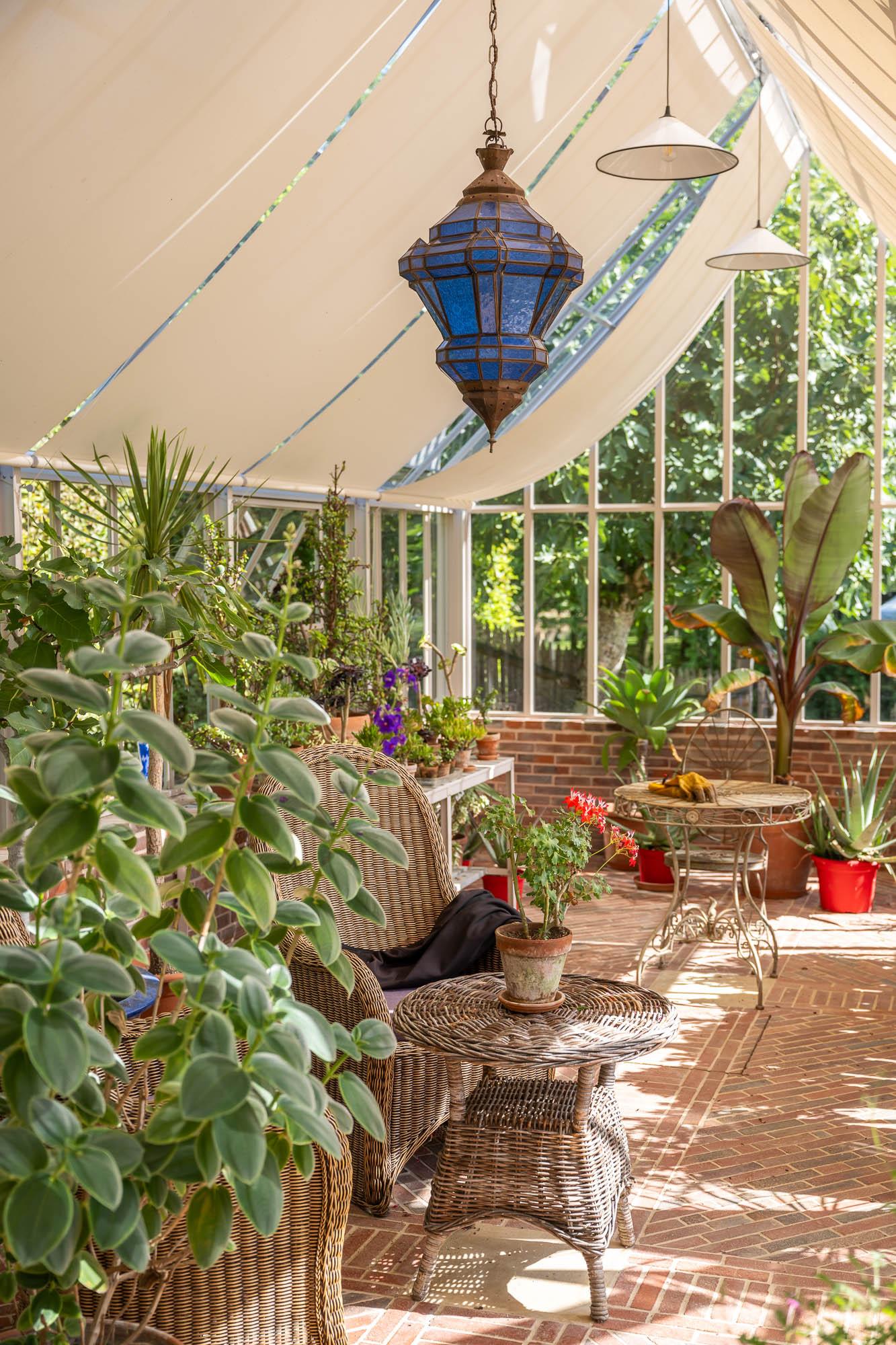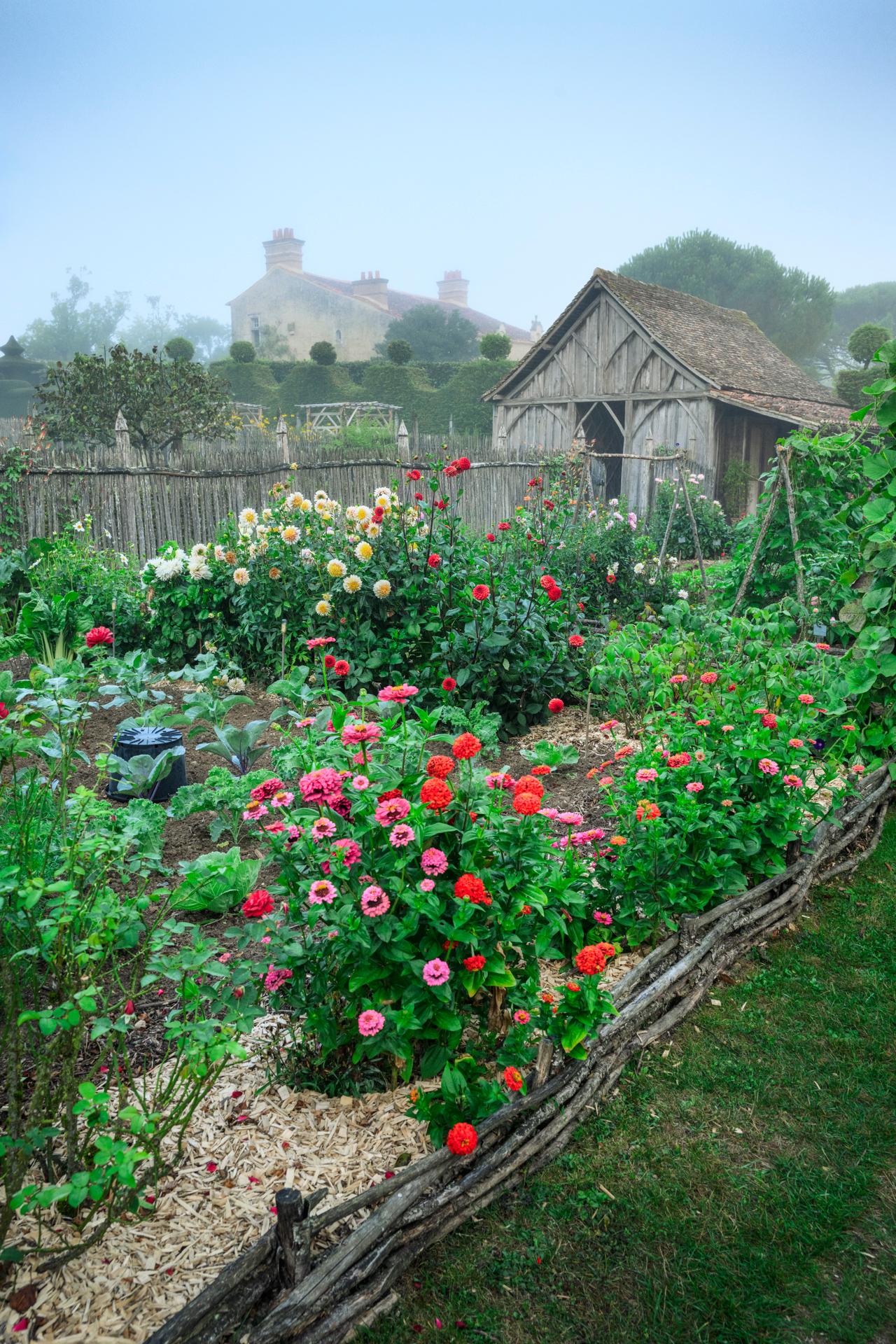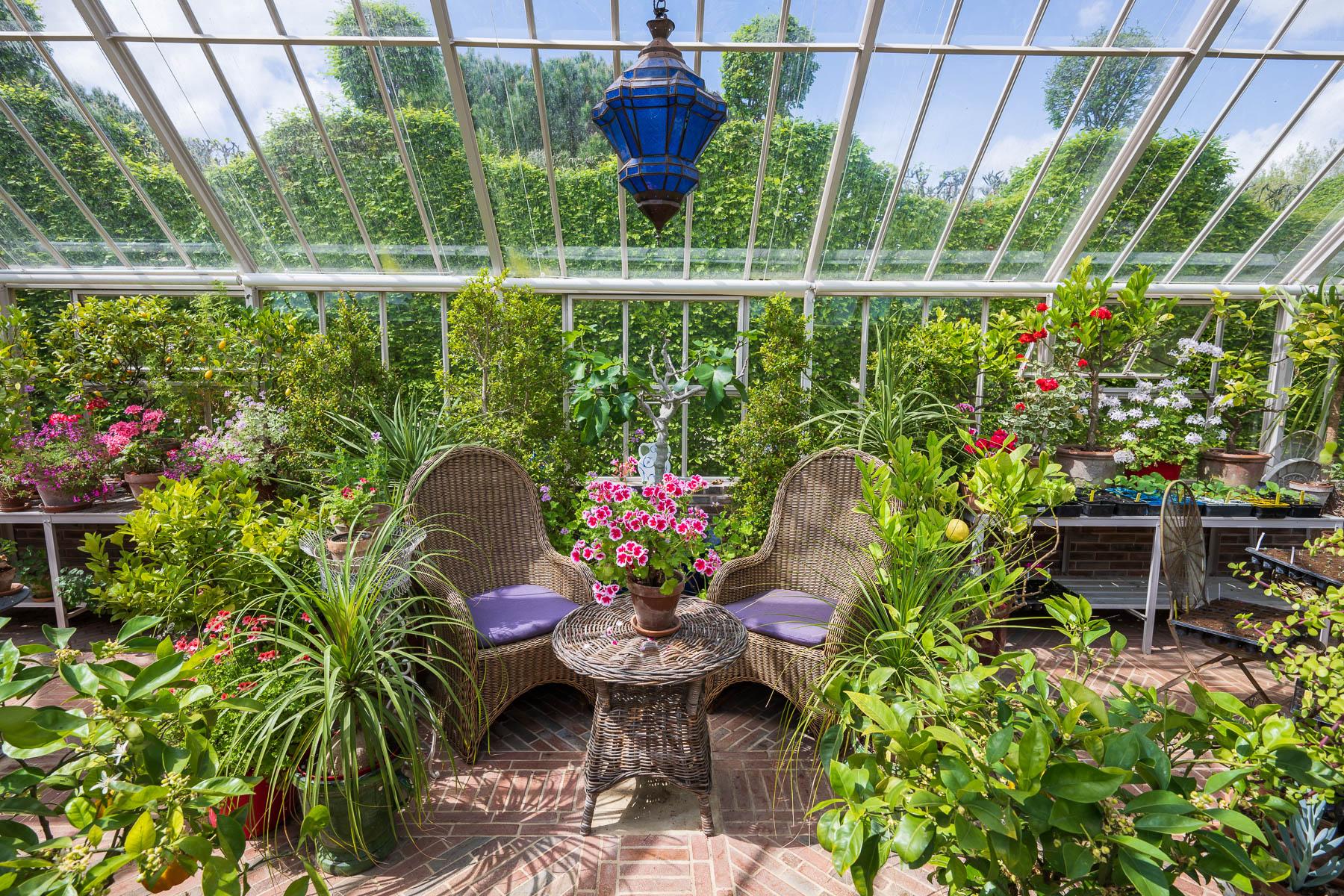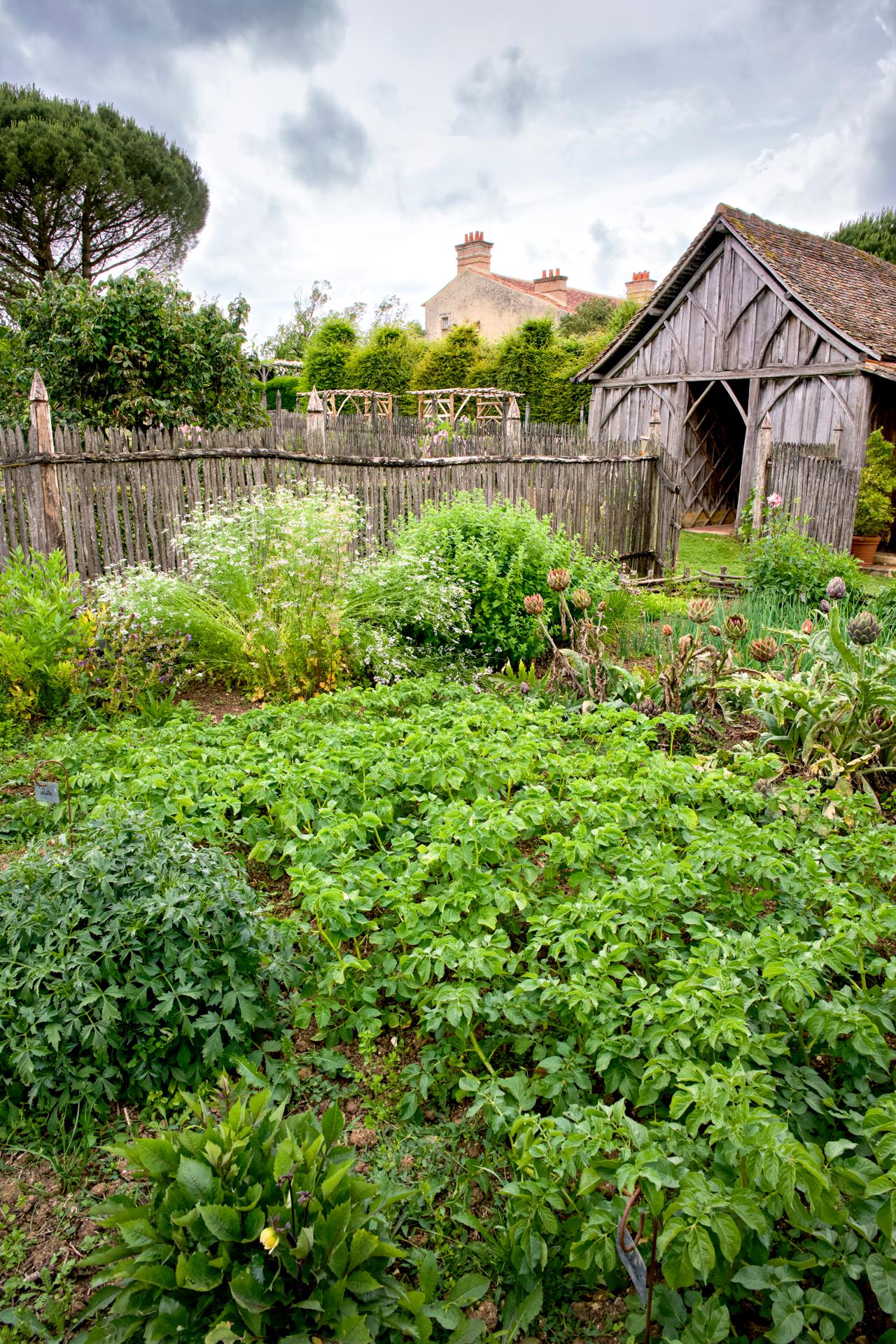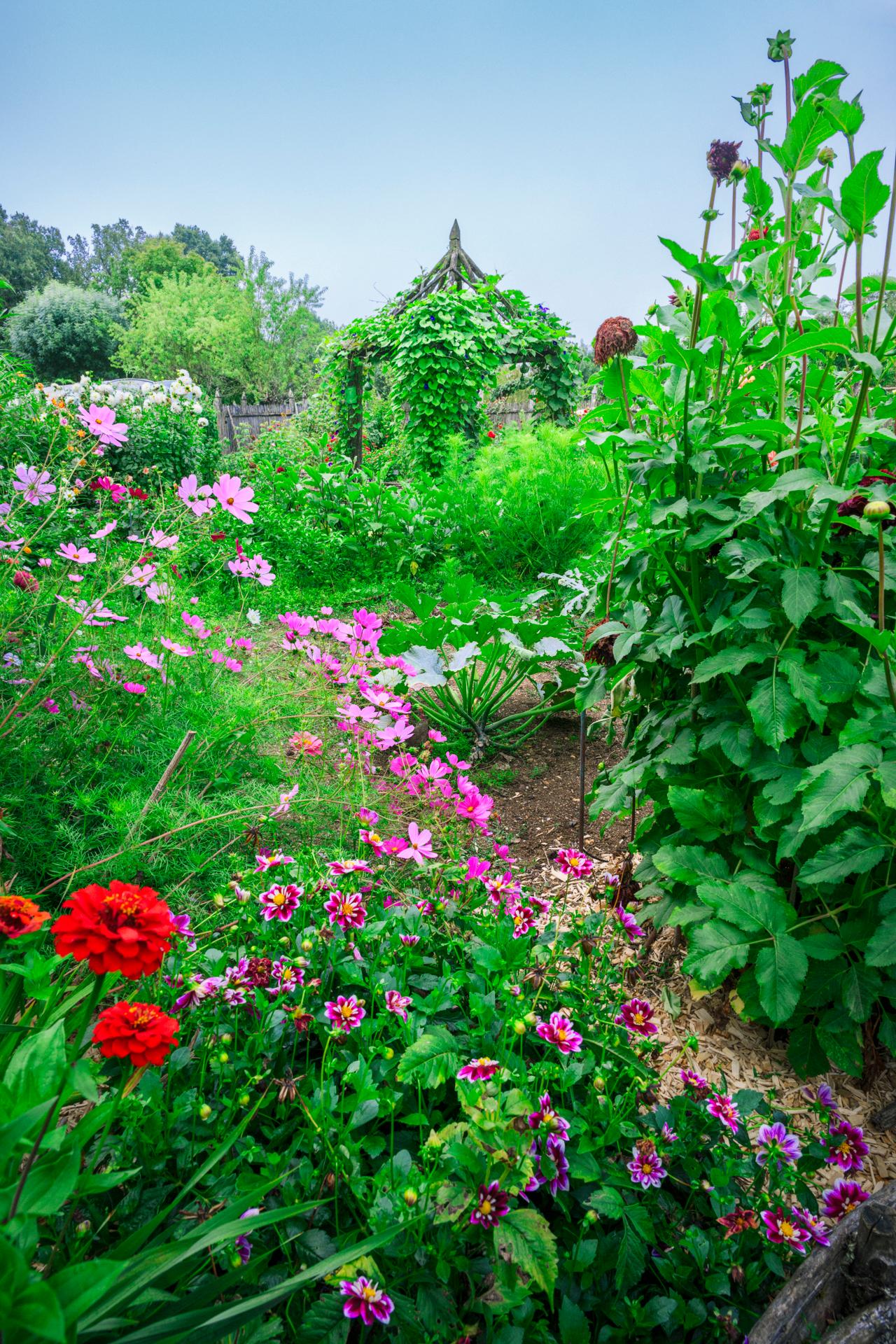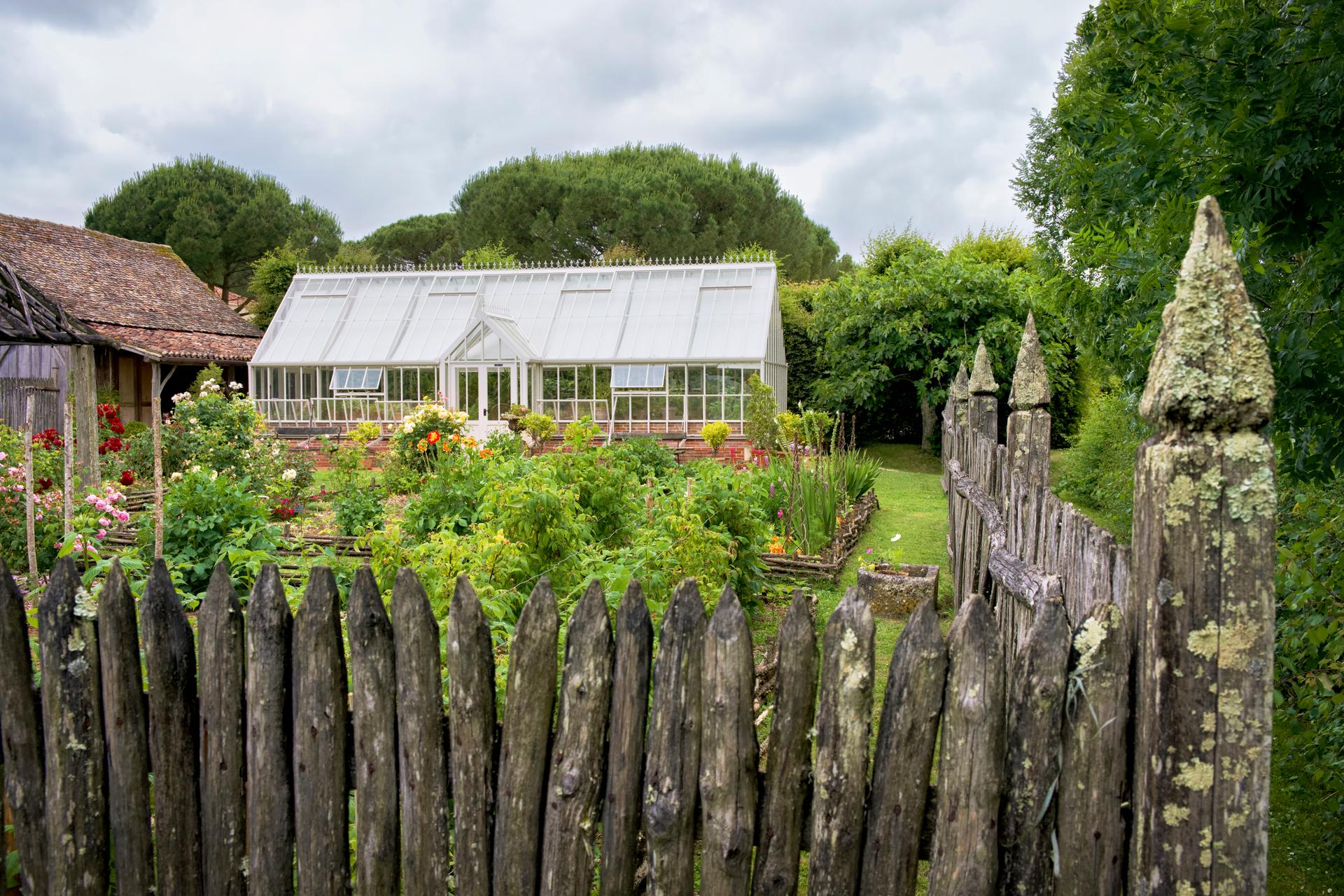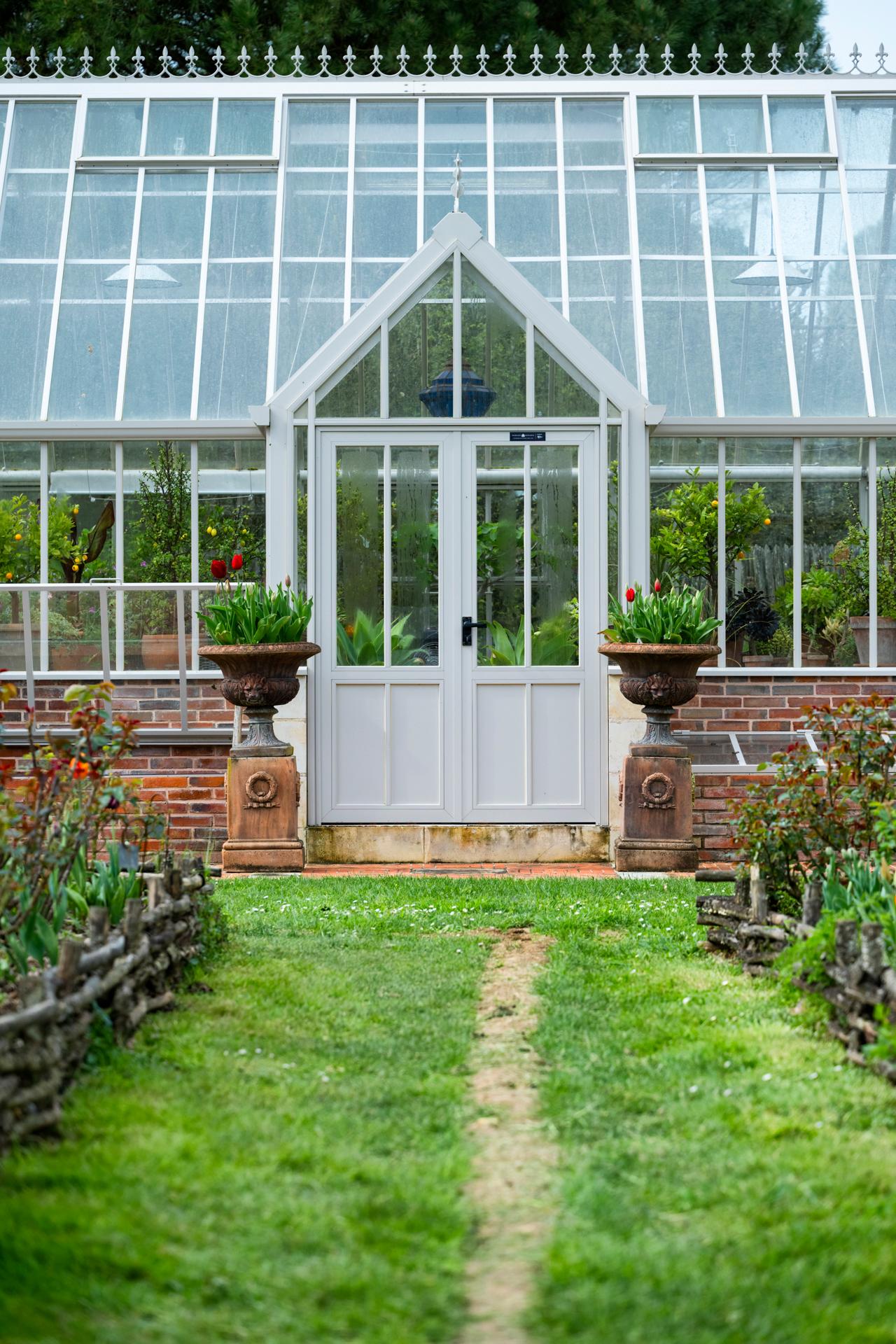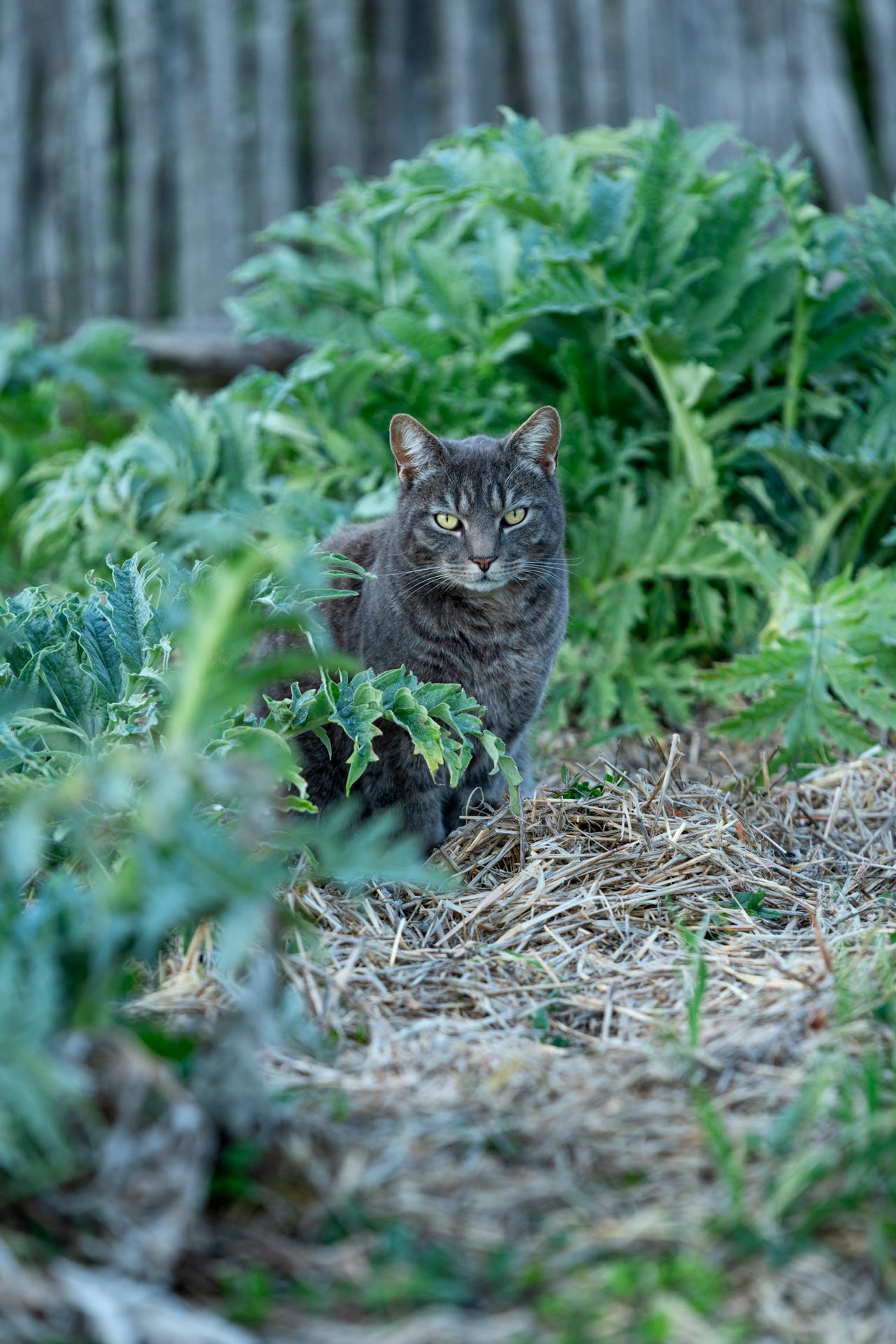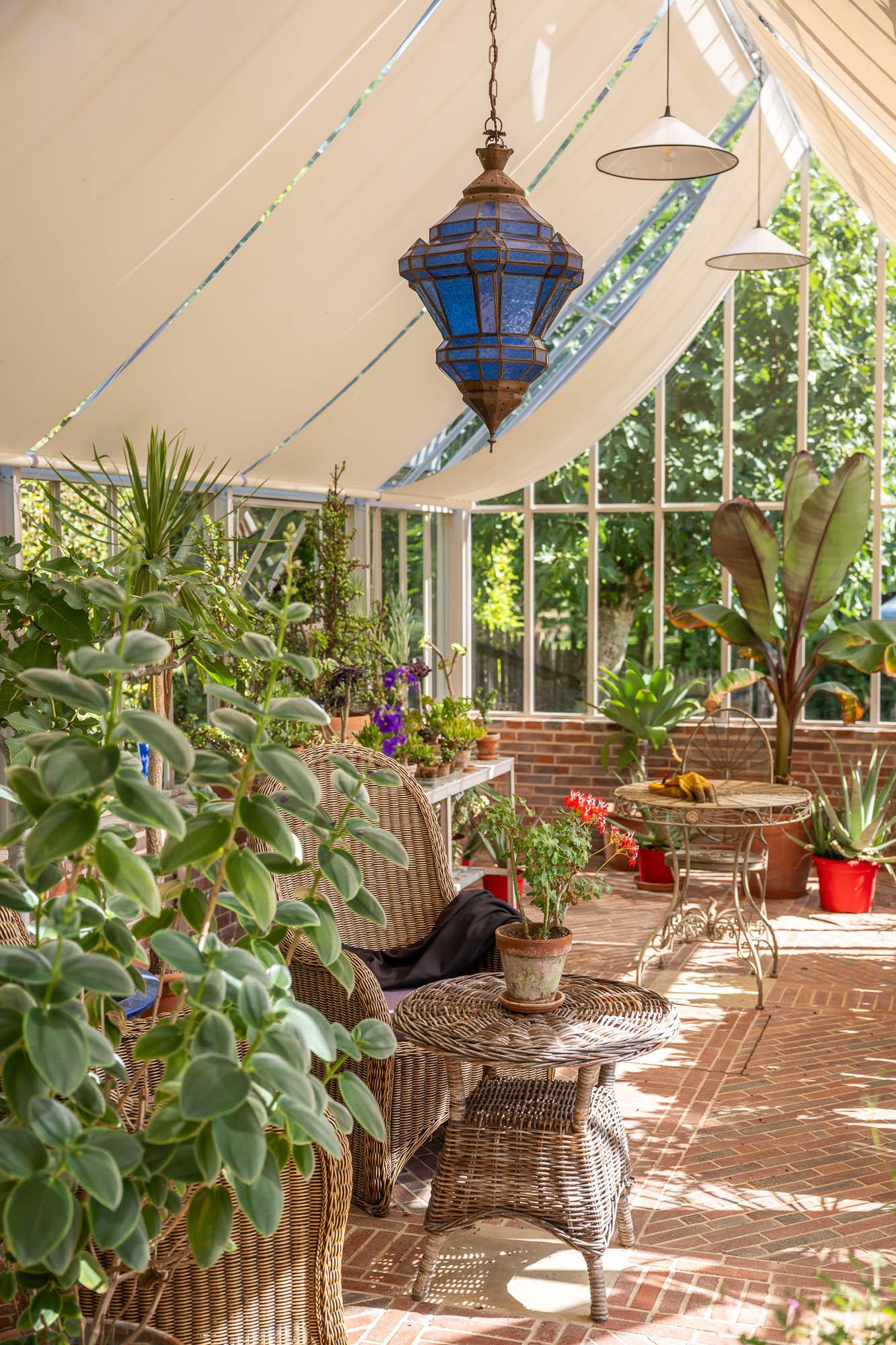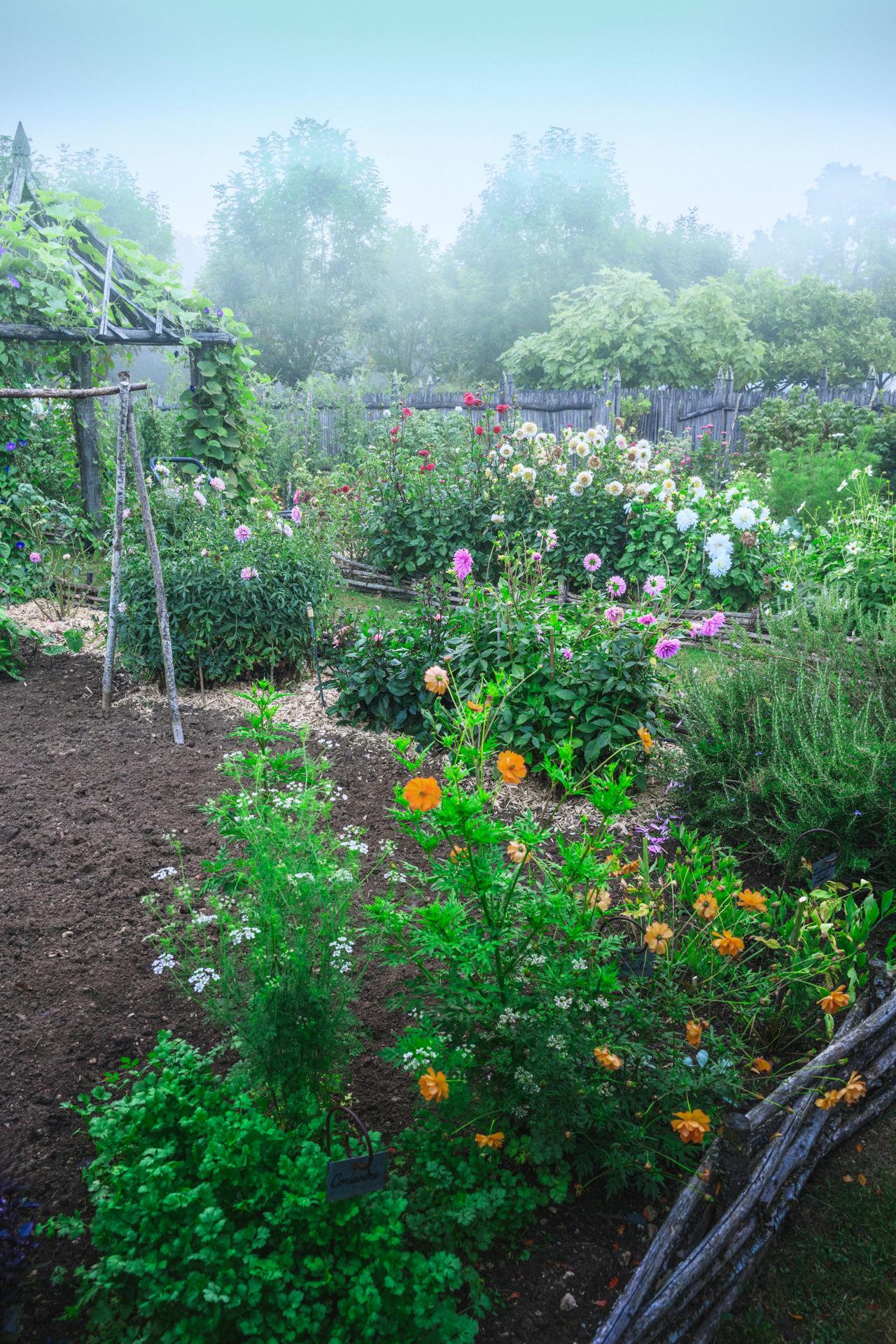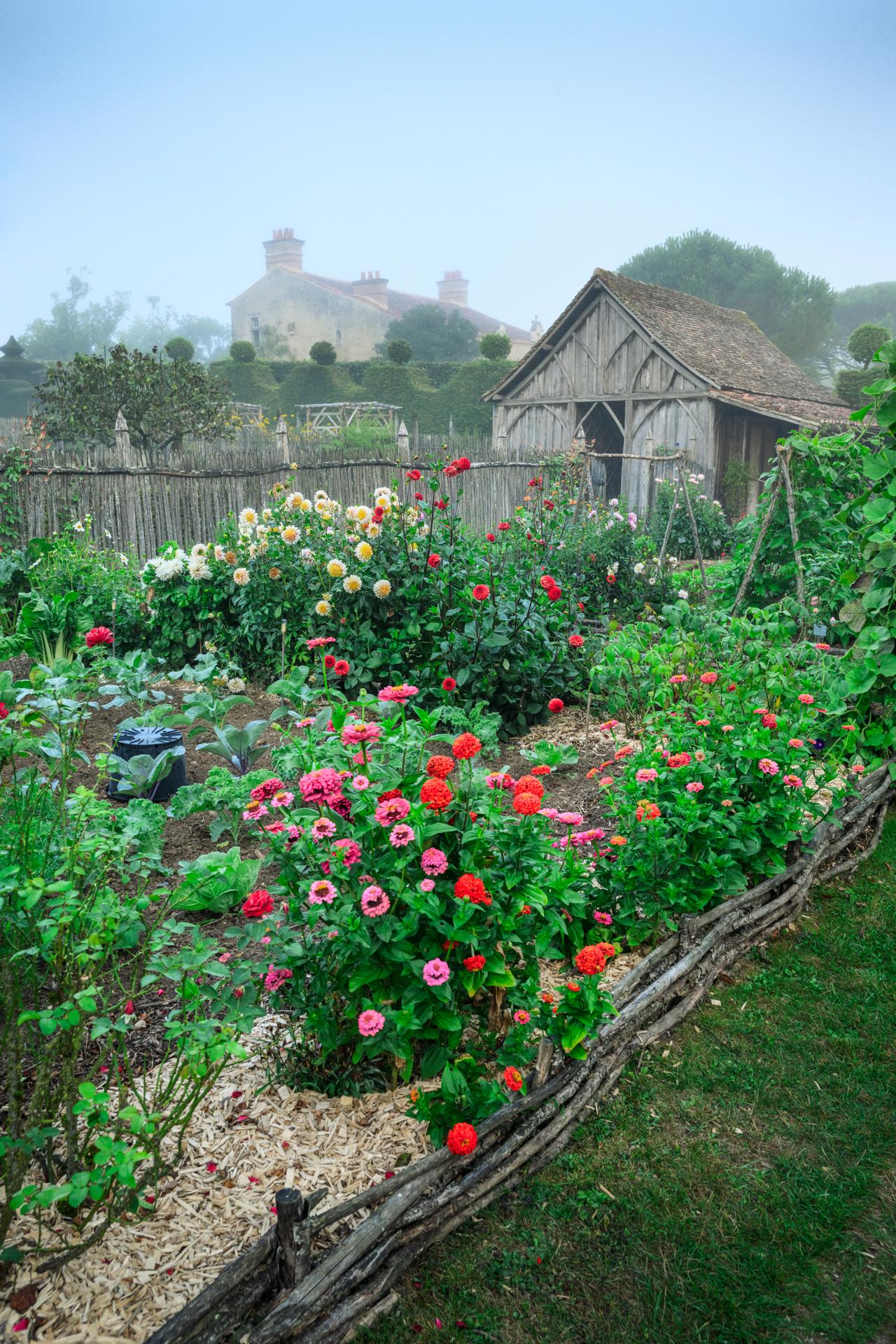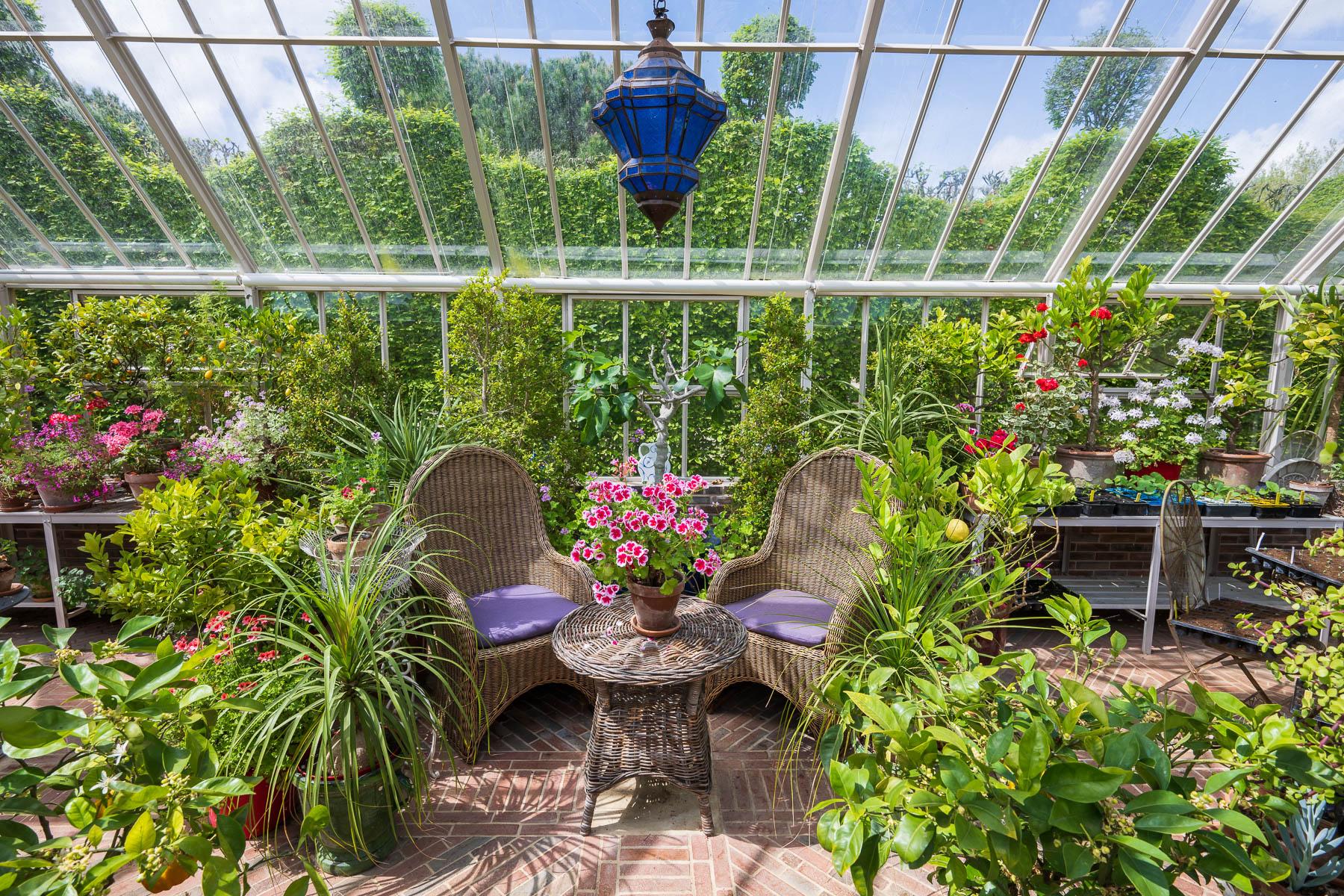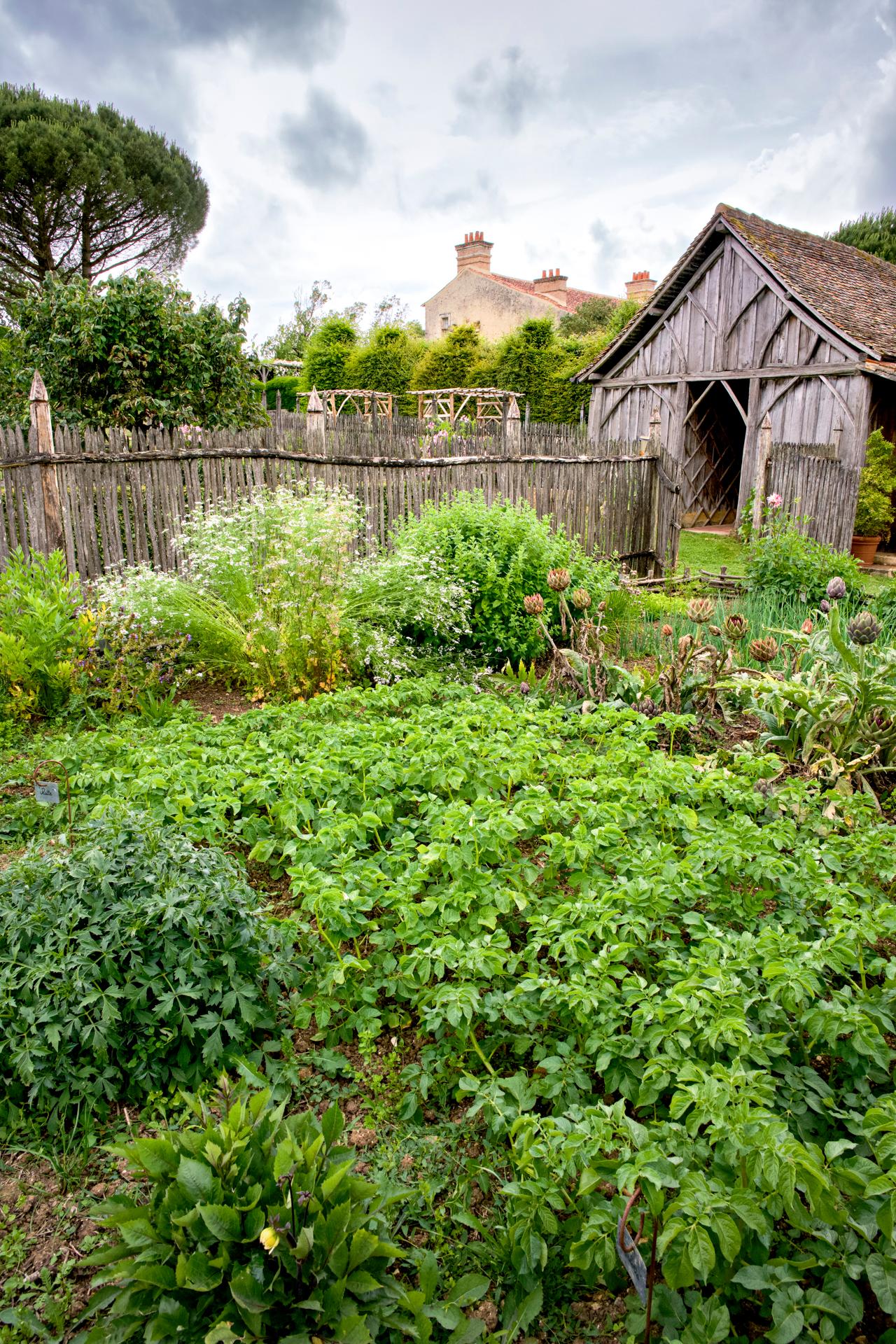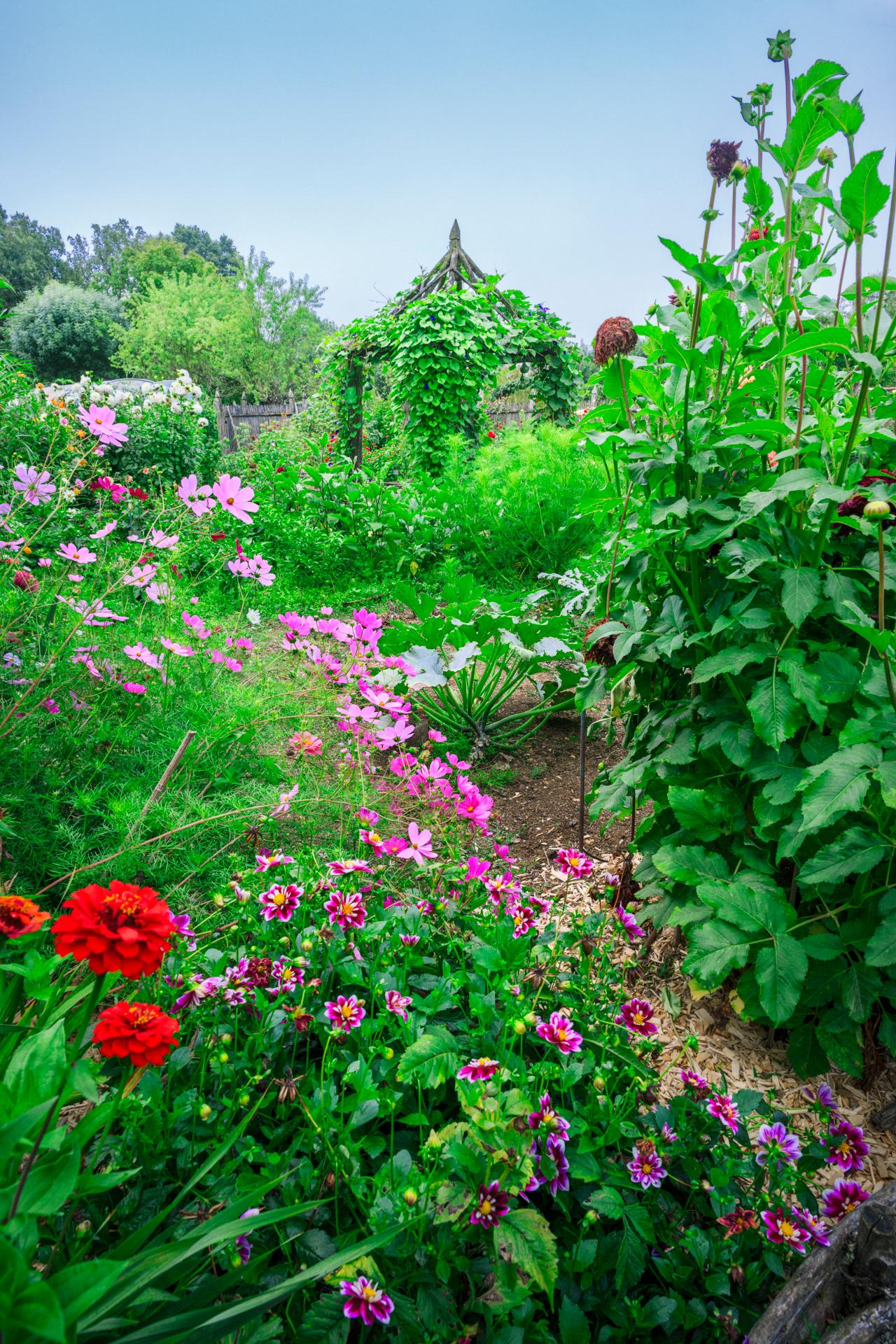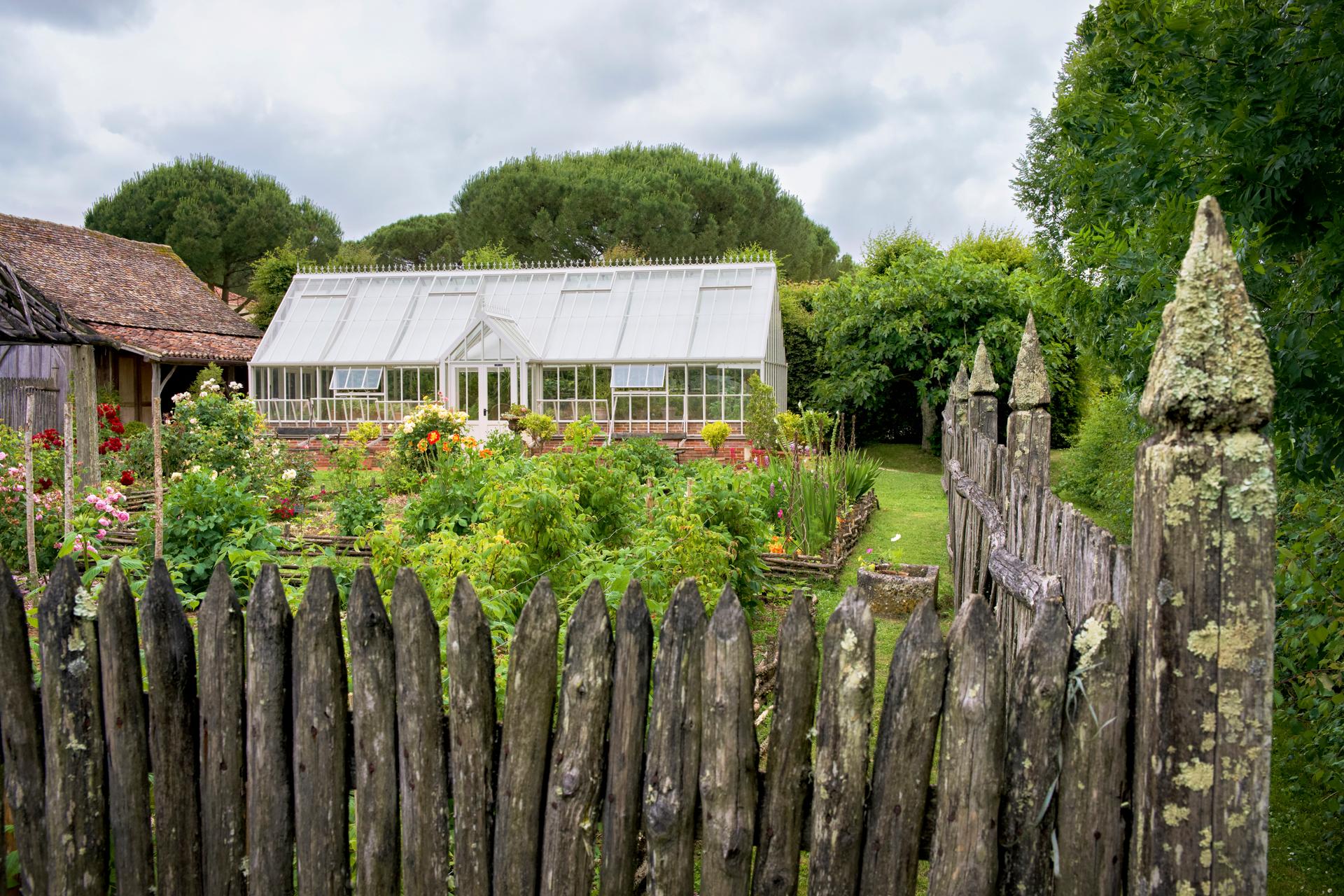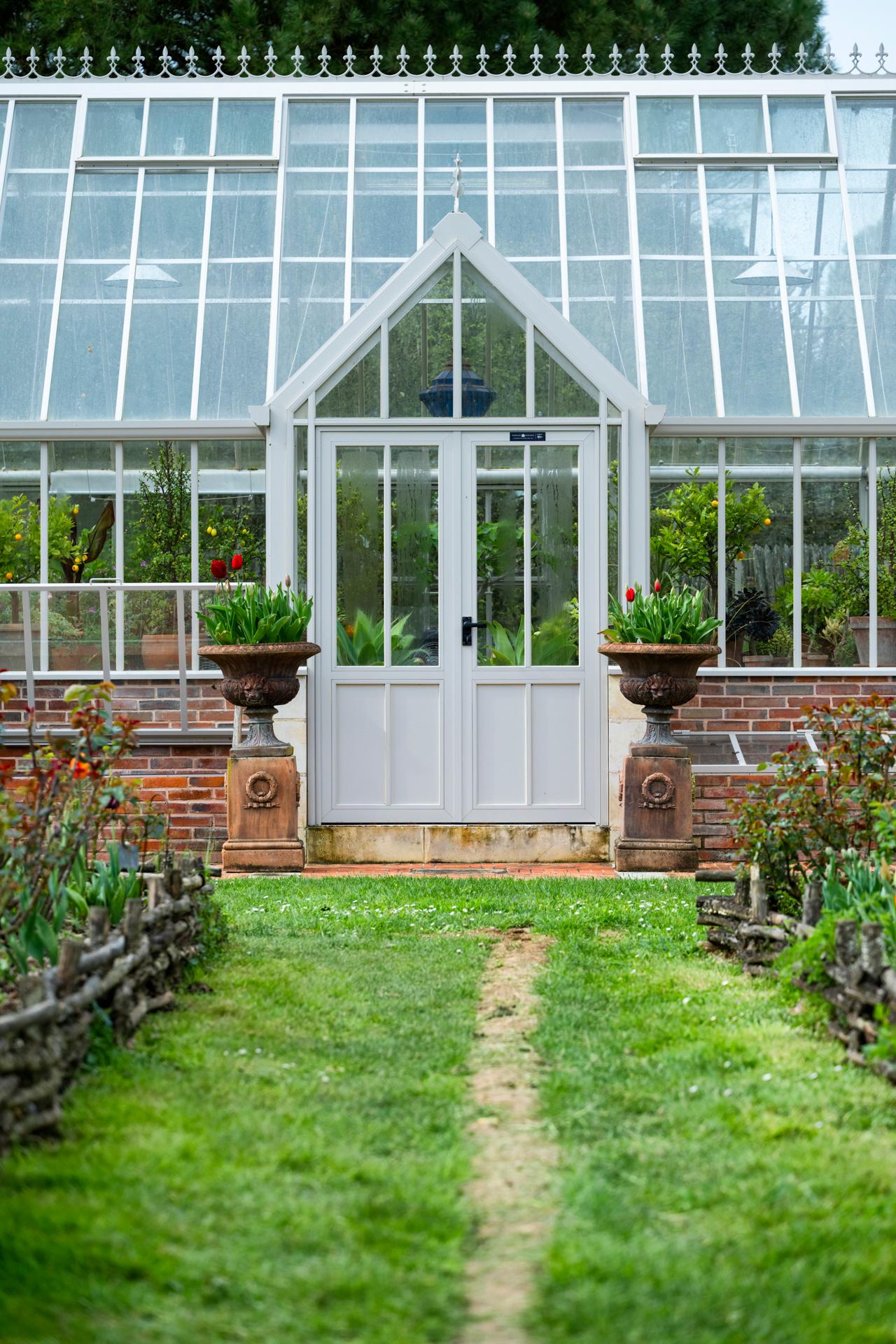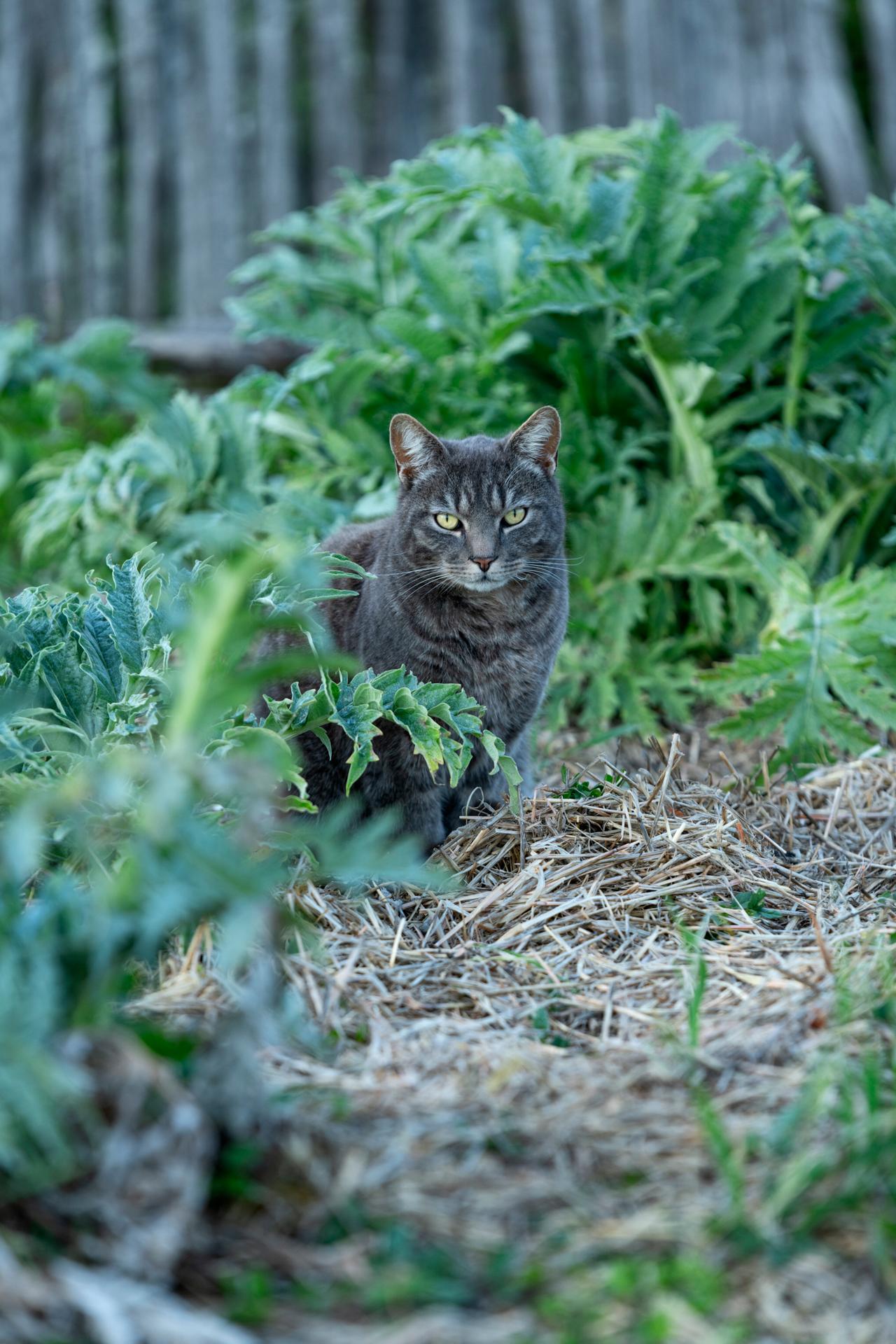Vegetable Garden and Greenhouse
William Christie’s garden is not only pleasing to the eyes; it appeals to the other senses as well with its scents, sounds... and flavors—certainly a benefit for a fine chef like William Christie! It is the musician-gardener himself who tends the vegetable patch and harvests fresh ingredients from it for the dining pleasure of his guests. In the neighboring greenhouse, he observes the blooming of the rare and delicate plants that he collects and is fascinated with…

The Vegetable Garden and the Greenhouse, in William Christie's words:
I designed the kitchen garden as a large room enclosed by a very handsome paling which was constructed by a local craftsman using split chestnut branches, a technique traditional to this part of France. Visitors will notice that I've used rose and fruit bushes, blackcurrant, gooseberry, and raspberry to delimit each square. In summer these perennials are complemented by a handsome collection of dahlias which mix harmoniously with the vegetables.
The Greenhouse is a pleasant, peaceful place from which I can contemplate the vegetable garden. It also houses a collection of non-rustic plants that I am especially fond of—numerous pelargoniums and succulents that I like to see all year long.
Gardener's word
Hollyhocks grow along the fencing that encloses the potager. Emblematic ofEnglish cottage gardens as much as they are of rural French villages.Grown in France since the fifteenth century they are featured in the Book of Hours of Anne of Brittany [1477-1514], the queen of France, where they are described as roses d’oustremer – roses from overseas - whence the common name in France of ‘rose trémière’. They are one of William Christie’s favourite flowers.
John Hoyland, advisor for garden design and William Christie's friend
![logo des arts florissants z-[200]](/_next/static/media/logo-menu-black.27dda4ca.svg)




